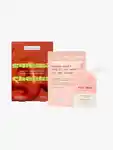Body Gifts
Smooth, glowing skin – all over.
142 results
142 results
Sort by

Refillable

Mini

Mini

Limited Edition

Limited Edition

Mini
Limited Edition
Mini
Mini
Limited Edition
Mini
Mini
Refillable
Limited Edition
Election Finalist
Refillable
Mini
Mini
Refillable
Value Set
Body & Personal Care Gifts
It’s a classic gift, and with good reason: bath gift sets often contain the kind of lush body products one wouldn’t splurge on for themselves (but always love to receive). It’s the ultimate gift to say ‘you deserve it’. Treat your loved one to something special from our range of body care gifts and sets that will cleanse, hydrate and exfoliate from head to toe, for the self-care lover in your life. A crowd favourite!







